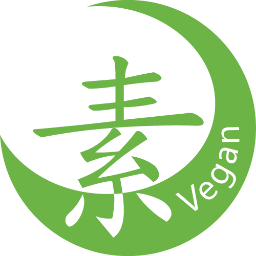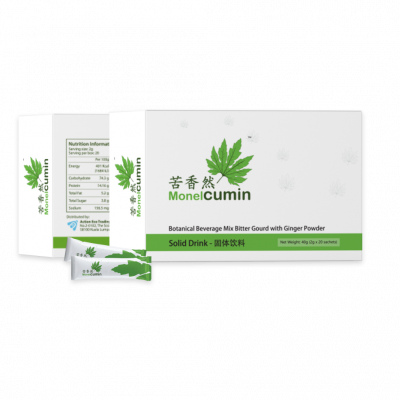
Monelcumin
Bitterness overcomes Sweetness:
“Sweetness products” in “daily diet” to everyone, with the consequence by damaging physical health. “Sweetness” can be said as the source of all diseases, almost all diseases in human body are caused by “sweetness”, and caused various diseases hard to be cured.
“Monelcumin” Anti-Sweet’s Nutritious Food, is formulated with the natural theory of “medicine and food homology, by bitter against sweet”. “Sweetness products” which have hidden dangers caused by long-term lurking in the body. “Sweet nemesis is bitter” only bitter can resolve sweetness as it’s the main cause affect physical health getting aging. Therefore, maintain blood sugar level is the only way to recover healthiness.
As we know, the complications from a “sweetness physique” are very terrifying. However, personal sweetness habit are difficult to change. With the word of “No pain no gain” by reflecting with theory “bitterness overcomes sweetness”.
“Monelcumin” is a Anti-Sweet’s Nutritious Food by reducing blood sugar level in body. As well, only body maintain healthy and rejuvenated by relieving “cellular fatigue” stress.
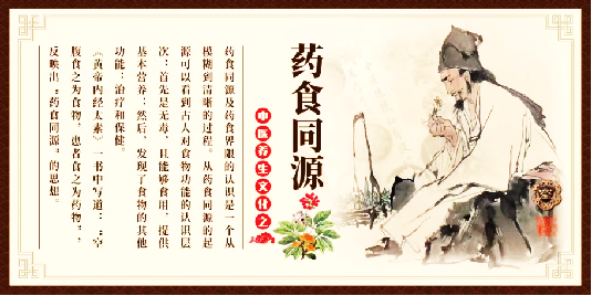
Img 1.0, ~ Anti-Aging, Anti-Sweet; Stay healthy with bitterness ~



Ingredients list
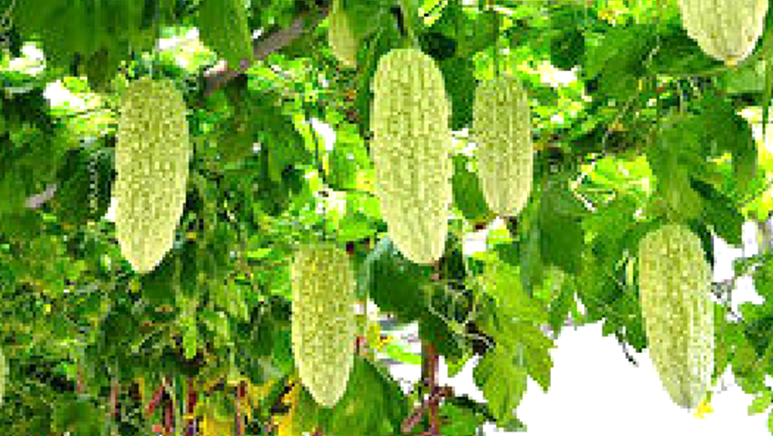
Momordica
Momordica also known as bitter melon or bitter gourd, is a tropical and subtropical vine of the family Cucurbitaceae. Stems, branches, petioles and pedicels are covered with pubescent hairs. Long oval fruits with pointed end, wart-like bumps surface. Peel will be dark green when immature, orange-yellow when mature. In medical research, bitter melon extract showed the improvement of “diabetic” blood sugar viscosity, and effect of maintain blood sugar constant and replacing “insulin”. In traditional medicine, momordica has the effect of “relieving heat and greasy”, detoxification, protect stomach and body health.Characteristic:
- Momordica rich in protein, alkaloid, calcium, phosphorus, iron, carotene, riboflavin, vitamin C and other nutrients.
- Momordica can promote appetite, quench thirst, promote liver health, clear heat and detoxify, and has diuretic effects.
Benefits:
- Momordica contains glycosides similar to insulin substances, which can help regulate the endocrine system, promote insulin production, maintain blood sugar constant, and help in the control of diabetes. The high content of vitamin C can prevent scurvy, protect cell membranes, prevent atherosclerosis and protect heart and various organs. Long-term consume of momordica can inhibit various complications caused by “sweetness physique” and maintain physical health.
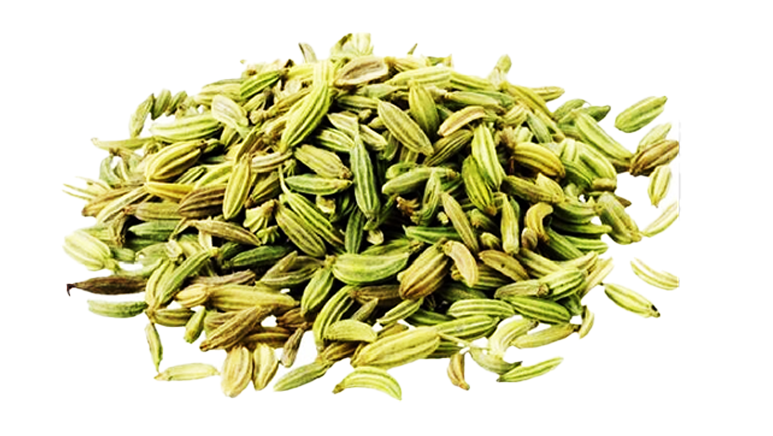
Fennel
Fennel, is a flowering plant species in the carrot family, indigenous to the shores of the Mediterranean. Fennel seed, cylindrical, 4-8mm long, yellowish-green surface, slightly pointed at both ends; it has a specific aroma and the taste is slightly sweet. Fennel is a common seasoning and frequently used as Chinese herbal medicine.Characteristic:
- Fennel rich in carotene, protein, fat, dietary fiber, vitamins, anethole, anisone, anisaldehyde, anise oil, etc.
- Fennel has a good repelling cold effect due to its nature characteristic.
Benefits:
- Anise oil of fennel can stimulate the secretion of saliva and gastric acid, help gastrointestinal motility, promote appetite, and speed up the digestion and absorption of food.
- Fennel can reduce the number of osteoclasts, prevent bone mineral loss and osteoporosis.
- Fennel can be used as a carminative to relieve symptoms such as flatulence and indigestion.
- Fennel rich in dietary fiber and vitamin B complex, its nutrients can prevent muscle cramps, anti-inflammatory, antioxidant, relax muscles, increase metabolism and promote healthy skin.
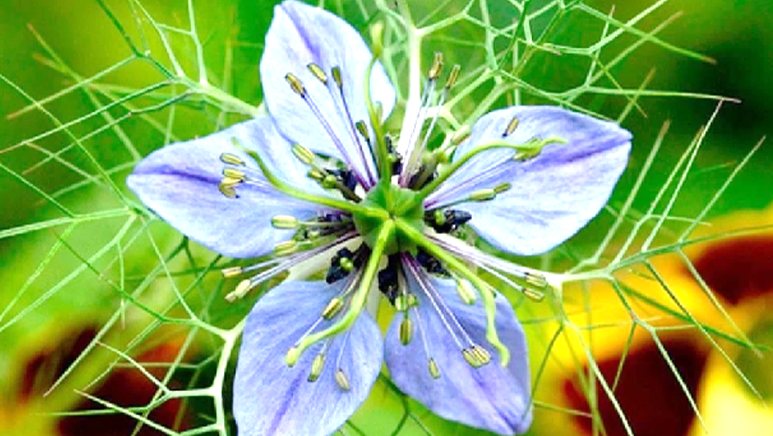
Cumin
Cumin similar size to sesame seeds, is a flowering plant in the family of Apiaceae, native to the Middle East, Mediterranean, India, Asia. Cumin tree is about 20-30 cm tall, with linear leaves, and the flowers are light blue-white with 5 – 10 petals. The fruit is a large, inflated capsule consisting of 3 – 7 conjoined sacs, each containing seed.Characteristic:
- Cumin due to its special aroma, it is often used as a spice and seasoning to add to various food ingredients.
- Cumin seeds contain a variety of active compounds, such as thymoquinone, alkaloids, saponins, flavonoids, proteins, fatty acids, etc. Among them, thymoquinone is considered to be the most beneficial active compound, and it also can improve the respiratory, digestive and immunity system, etc.
Benefits:
- Cumin acts as a carminative to improve indigestion, bloating, and other symptoms of upset stomach.
- Cumin rich in fatty acids, it can help relieve joint pain and swelling, reduce arthritis symptoms, reduces the risk of heart disease, protects the liver and gastrointestinal lining from bacteria.
- Cumin can help increase insulin and delay the speed of blood for sugar absorption, improve blood sugar levels, and obvious effect to patients with high blood sugar.
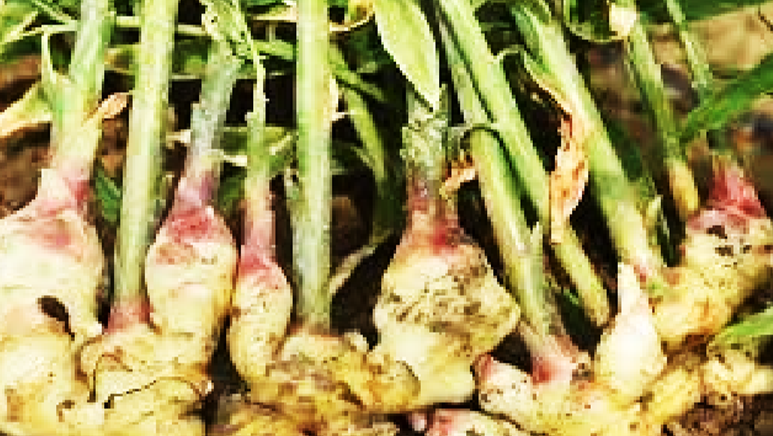
Ginger
Ginger is a herbaceous perennial which grows annual pseudo stems about 1m tall bearing narrow leaf blades, native to China, South-East Asia, tropical region. Its surface is yellow-brown or gray-brown, brittle, easy to break, and the section is light yellow.Characteristic:
- Ginger rich in natural gingerone, volatile oil and gingerol.
- Ginger has the functions of sweating, relieve vomiting, relieve cough, dispel dampness and relieve cold.
- It is suitable for symptoms such as exogenous wind-cold, phlegm-drinking, cough, stomach-cold, and vomiting.
Benefits:
- Ginger can stimulate gastric mucosa, promote gastric acid secretion and gastrointestinal digestion, improve appetite.
- The volatile oil and gingerol of ginger can promote blood circulation, increase perspiration, and take away the excess heat in the body.
- Ginger is rich in potassium and has a pungent fragrance, which can help sober up, clear the mind, and keep the mood stable.
- Ginger has the functions of dispelling cold, eliminating dampness and detoxification, regulating the internal, and improving complexion. Gingerol can reduce the occurrence of gallstones.
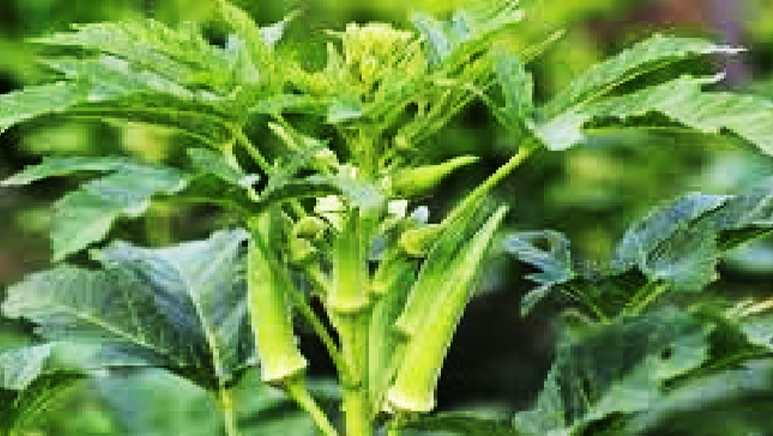
Okra Seeds
Okra also known as ladies’ fingers, it’s an annual or perennial plant that belonging to the Malvaceae family and its height can up to 2m. The fruit is slender and pointed at the top, mostly pentagonal or hexagonal in cross section, inside have up to 100 spherical seeds with diameter 4–5 mm;native to West African, Ethiopian, Southeast Asian, and now been cultivated in tropical, subtropical, and warm temperate regions.Characteristic:
- Rich in unsaturated fatty acids, vitamins, minerals, proteins, trace elements, carotene, polysaccharides, etc.
- Okra seeds are beneficial to reduce throat swelling, and can be used to treat the symptoms of sore throat.
Benefits:
- The unsaturated fatty acids in okra seeds can help clear low-density cholesterol (LDL) in blood vessels, promote blood circulation, and improve cardiovascular system.
- Contains pectin, galactan and other nutrients to promote digestion and protect gastric mucosa.
- Okra seeds rich in special mucus and soluble fiber, it prevents the digestion of carbohydrates in the intestines and reduces the absorption of glucose, thereby blood sugar levels get control and balance.
- Okra seeds rich in vitamins A and C, powerful antioxidants can help scavenge free radicals in the body and slow down cellular aging.
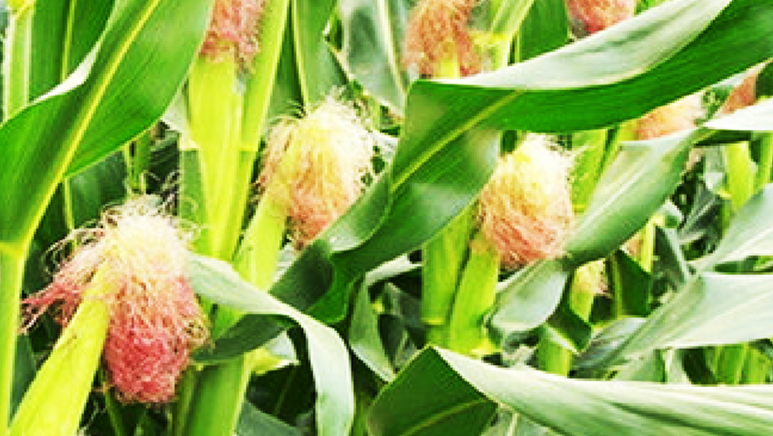
Corn Silk
Corn silk is shiny, thread-like, weak fibers that grow as part of ears of corn,the tuft or tassel of silky fibers that protrude from the tip of the ear of corn. Each fiber is elongated from the stigma, and bottom attached with an ovule. When mature, it can grow to 30 cm or more with light green or tan color.Characteristic:
- Corn silk rich in water, carbohydrates, protein, lipids, dietary fiber, macro-elements (calcium, magnesium, potassium) and trace elements (copper, iron, manganese, zinc), polyphenols, flavonoids.
- Corn silk commonly used for diuresis and swelling, dispelling dampness and heat, calming liver and gallbladder.
Benefits:
- The polysaccharides in corn silk can improve blood sugar levels as well as cholesterol and triglyceride levels in the blood serum.
- It is used to dilate peripheral small blood vessels, thereby counteracting the boosting effect of adrenaline.
- The alkaloids in corn silk have the effect to relieve vomiting, antitussive, antibacterial, and anti-inflammatory.
- Corn silk contains vitamin K and has a therapeutic effect on coagulation disorders.
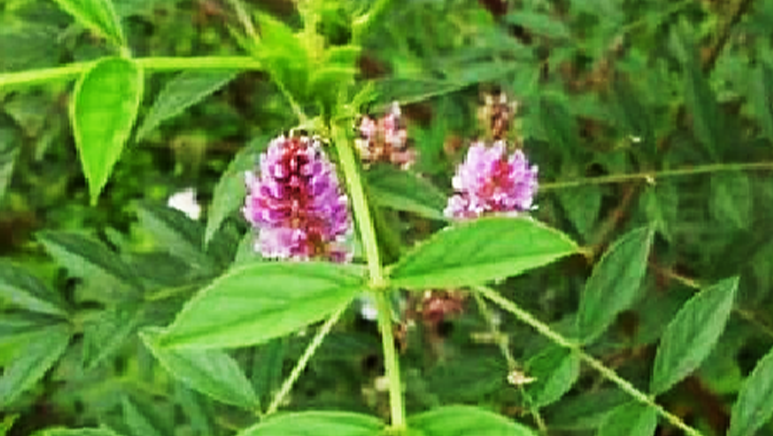
Licorice
Licorice plant is an herbaceous perennial legume native to Western Asia, North Africa, and Southern Europe. The licorice root is cylindrical, the surface is reddish brown, dark brown or grayish brown, with obvious wrinkles, grooves and horizontally long lenticels. The rhizome is cylindrical, with bud marks on the surfaceCharacteristic:
- Licorice rich in glycyrrhizinate, glycyrrhizin, polysaccharides and amino acids.
- Traditional Chinese medicine commonly used licorice in the treatment of spleen and stomach weakness, abdominal pain, lung phlegm cough and asthma, peptic ulcer, chronic pharyngitis, food poisoning and skin diseases.
Benefits:
- Licorice has anti-inflammatory effect and can be used to treat sore throat, recover the functioning of spleen , stomach, fatigue and so on.
- Licorice has the effect of resolving phlegm and relieving cough, reconciles drug potency, and reduces the stimulation of the drug to the gastrointestinal tract. It is suitable for bronchitis, emphysema, etc.
- Glycyrrhizinate in licorice can prevent liver cell damage, protect the liver, and prevent viruses from entering liver cells, by changing the cell membrane permeability to achieve antiviral effects.
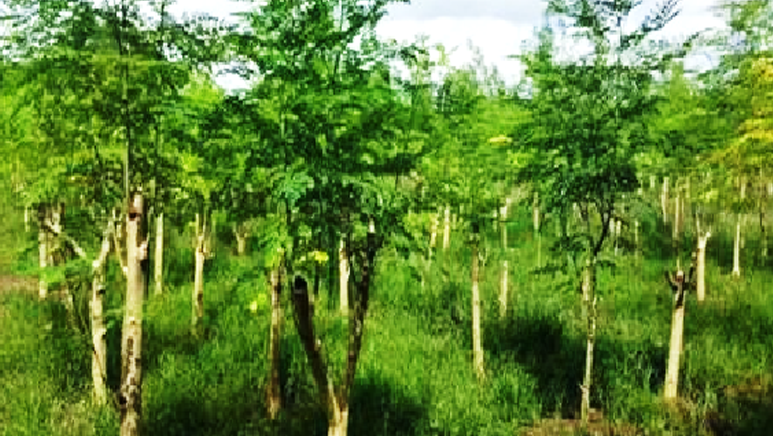
Moringa Leaves
Moringa oleifera is a fast-growing, drought-resistant tree of the family Moringaceae, native to the Indian subcontinent, also known as drumstick tree, miracle tree, ben oil tree, or horseradish tree. Moringa can reach 10-12m height and trunk diameter of 45cm in first year.Characteristic:
- Moringa leaves contain high calcium elements which is more than 4 times of milk; somehow, it’s also rich in potassium, iron, zinc and other trace elements, protein, amino acids, etc., considered as a natural green containing complete nutrients food.
- Moringa leaves contain alkaloids, moringa flavonoids and monounsaturated fatty acids. As a vegetable and food, it has the functions of enhancing nutrition, diet and health care; it’s also widely used in medicine and health care.
Benefits:
- Moringa leaves can help to reduce blood sugar, cholesterol, blood pressure, anti-tumor, antioxidant, laxative, diuretic, deworming, and improving sleep. Long-term consumption can enhance immunity, detoxification, body sculpting, anti-aging, anti-cancer, and greatly improve in various chronic and major diseases.
- Moringa leaves considered as pure natural green food that contains all the nutrients needed by human body and can replace multivitamins, calcium tablets, fish liver oil, etc. Especially good for the patients with hypertension, hyperlipidemia, diabetes, gout, etc.
- Moringa leaves can be used to treat the diseases of special parts such as liver, spleen, meridians.
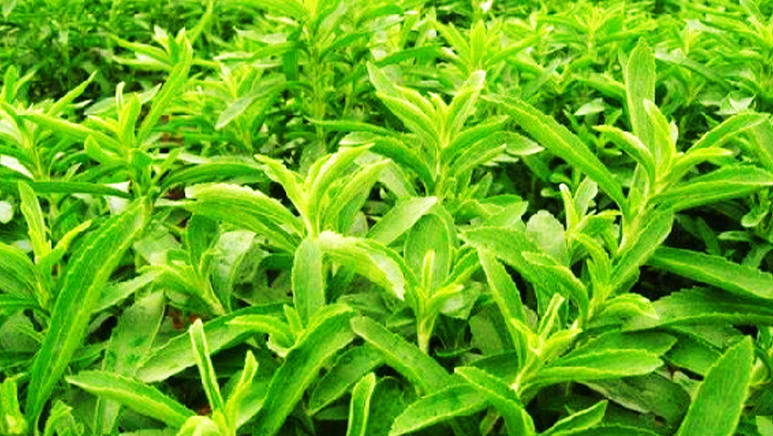
Stevia Leaves
Stevia is a natural sweetener and sugar substitute derived from the leaves of the plant species Stevia rebaudiana, native to Brazil and Paraguay. Stevia leaves contain “steviol glycosides”, which make stevia leaves not only high in sweetness and low in calories, but also have certain pharmacological effects.Characteristic:
- “Steviol glycosides“ in stevia leaves can promote the formation of liver-lowering glycogen to achieve the effect of reducing blood sugar, and can be used as an auxiliary conditioning food for diabetes patients.
- Stevia leaves used for promoting and balancing body fluid, quenching thirst and reducing blood pressure.
Benefits:
- Stevia leaves have the effect with anti-fatigue and enhance immunity. Stevioside is hardly metabolized in human body and doesn’t generate excess, calories so it’s often used to make food for obese patients.
- Stevia leaves also have significant curative effects on heart disease and pediatric dental caries. Since stevioside is a non-sugar sweetener, it can be used to prevent dental caries in children.
- Stevia leaves contain phenolic acids, with antioxidant activity, antibacterial, antiviral, protection of liver cells, inhibition of cell mutation, anti-tumor and other physiological and pharmacological functions.

Momordica
Momordica also known as bitter melon or bitter gourd, is a tropical and subtropical vine of the family Cucurbitaceae. Stems, branches, petioles and pedicels are covered with pubescent hairs. Long oval fruits with pointed end, wart-like bumps surface. Peel will be dark green when immature, orange-yellow when mature. In medical research, bitter melon extract showed the improvement of “diabetic” blood sugar viscosity, and effect of maintain blood sugar constant and replacing “insulin”. In traditional medicine, momordica has the effect of “relieving heat and greasy”, detoxification, protect stomach and body health.Characteristic:
- Momordica rich in protein, alkaloid, calcium, phosphorus, iron, carotene, riboflavin, vitamin C and other nutrients.
- Momordica can promote appetite, quench thirst, promote liver health, clear heat and detoxify, and has diuretic effects.
Benefits:
- Momordica contains glycosides similar to insulin substances, which can help regulate the endocrine system, promote insulin production, maintain blood sugar constant, and help in the control of diabetes. The high content of vitamin C can prevent scurvy, protect cell membranes, prevent atherosclerosis and protect heart and various organs. Long-term consume of momordica can inhibit various complications caused by “sweetness physique” and maintain physical health.

Fennel
Fennel, is a flowering plant species in the carrot family, indigenous to the shores of the Mediterranean. Fennel seed, cylindrical, 4-8mm long, yellowish-green surface, slightly pointed at both ends; it has a specific aroma and the taste is slightly sweet. Fennel is a common seasoning and frequently used as Chinese herbal medicine.Characteristic:
- Fennel rich in carotene, protein, fat, dietary fiber, vitamins, anethole, anisone, anisaldehyde, anise oil, etc.
- Fennel has a good repelling cold effect due to its nature characteristic.
Benefits:
- Anise oil of fennel can stimulate the secretion of saliva and gastric acid, help gastrointestinal motility, promote appetite, and speed up the digestion and absorption of food.
- Fennel can reduce the number of osteoclasts, prevent bone mineral loss and osteoporosis.
- Fennel can be used as a carminative to relieve symptoms such as flatulence and indigestion.
- Fennel rich in dietary fiber and vitamin B complex, its nutrients can prevent muscle cramps, anti-inflammatory, antioxidant, relax muscles, increase metabolism and promote healthy skin.

Cumin
Cumin similar size to sesame seeds, is a flowering plant in the family of Apiaceae, native to the Middle East, Mediterranean, India, Asia. Cumin tree is about 20-30 cm tall, with linear leaves, and the flowers are light blue-white with 5 – 10 petals. The fruit is a large, inflated capsule consisting of 3 – 7 conjoined sacs, each containing seed.Characteristic:
- Cumin due to its special aroma, it is often used as a spice and seasoning to add to various food ingredients.
- Cumin seeds contain a variety of active compounds, such as thymoquinone, alkaloids, saponins, flavonoids, proteins, fatty acids, etc. Among them, thymoquinone is considered to be the most beneficial active compound, and it also can improve the respiratory, digestive and immunity system, etc.
Benefits:
- Cumin acts as a carminative to improve indigestion, bloating, and other symptoms of upset stomach.
- Cumin rich in fatty acids, it can help relieve joint pain and swelling, reduce arthritis symptoms, reduces the risk of heart disease, protects the liver and gastrointestinal lining from bacteria.
- Cumin can help increase insulin and delay the speed of blood for sugar absorption, improve blood sugar levels, and obvious effect to patients with high blood sugar.

Ginger
Ginger is a herbaceous perennial which grows annual pseudo stems about 1m tall bearing narrow leaf blades, native to China, South-East Asia, tropical region. Its surface is yellow-brown or gray-brown, brittle, easy to break, and the section is light yellow.Characteristic:
- Ginger rich in natural gingerone, volatile oil and gingerol.
- Ginger has the functions of sweating, relieve vomiting, relieve cough, dispel dampness and relieve cold.
- It is suitable for symptoms such as exogenous wind-cold, phlegm-drinking, cough, stomach-cold, and vomiting.
Benefits:
- Ginger can stimulate gastric mucosa, promote gastric acid secretion and gastrointestinal digestion, improve appetite.
- The volatile oil and gingerol of ginger can promote blood circulation, increase perspiration, and take away the excess heat in the body.
- Ginger is rich in potassium and has a pungent fragrance, which can help sober up, clear the mind, and keep the mood stable.
- Ginger has the functions of dispelling cold, eliminating dampness and detoxification, regulating the internal, and improving complexion. Gingerol can reduce the occurrence of gallstones.

Okra Seeds
Okra also known as ladies’ fingers, it’s an annual or perennial plant that belonging to the Malvaceae family and its height can up to 2m. The fruit is slender and pointed at the top, mostly pentagonal or hexagonal in cross section, inside have up to 100 spherical seeds with diameter 4–5 mm;native to West African, Ethiopian, Southeast Asian, and now been cultivated in tropical, subtropical, and warm temperate regions.Characteristic:
- Rich in unsaturated fatty acids, vitamins, minerals, proteins, trace elements, carotene, polysaccharides, etc.
- Okra seeds are beneficial to reduce throat swelling, and can be used to treat the symptoms of sore throat.
Benefits:
- The unsaturated fatty acids in okra seeds can help clear low-density cholesterol (LDL) in blood vessels, promote blood circulation, and improve cardiovascular system.
- Contains pectin, galactan and other nutrients to promote digestion and protect gastric mucosa.
- Okra seeds rich in special mucus and soluble fiber, it prevents the digestion of carbohydrates in the intestines and reduces the absorption of glucose, thereby blood sugar levels get control and balance.
- Okra seeds rich in vitamins A and C, powerful antioxidants can help scavenge free radicals in the body and slow down cellular aging.

Corn Silk
Corn silk is shiny, thread-like, weak fibers that grow as part of ears of corn,the tuft or tassel of silky fibers that protrude from the tip of the ear of corn. Each fiber is elongated from the stigma, and bottom attached with an ovule. When mature, it can grow to 30 cm or more with light green or tan color.Characteristic:
- Corn silk rich in water, carbohydrates, protein, lipids, dietary fiber, macro-elements (calcium, magnesium, potassium) and trace elements (copper, iron, manganese, zinc), polyphenols, flavonoids.
- Corn silk commonly used for diuresis and swelling, dispelling dampness and heat, calming liver and gallbladder.
Benefits:
- The polysaccharides in corn silk can improve blood sugar levels as well as cholesterol and triglyceride levels in the blood serum.
- It is used to dilate peripheral small blood vessels, thereby counteracting the boosting effect of adrenaline.
- The alkaloids in corn silk have the effect to relieve vomiting, antitussive, antibacterial, and anti-inflammatory.
- Corn silk contains vitamin K and has a therapeutic effect on coagulation disorders.

Licorice
Licorice plant is an herbaceous perennial legume native to Western Asia, North Africa, and Southern Europe. The licorice root is cylindrical, the surface is reddish brown, dark brown or grayish brown, with obvious wrinkles, grooves and horizontally long lenticels. The rhizome is cylindrical, with bud marks on the surfaceCharacteristic:
- Licorice rich in glycyrrhizinate, glycyrrhizin, polysaccharides and amino acids.
- Traditional Chinese medicine commonly used licorice in the treatment of spleen and stomach weakness, abdominal pain, lung phlegm cough and asthma, peptic ulcer, chronic pharyngitis, food poisoning and skin diseases.
Benefits:
- Licorice has anti-inflammatory effect and can be used to treat sore throat, recover the functioning of spleen , stomach, fatigue and so on.
- Licorice has the effect of resolving phlegm and relieving cough, reconciles drug potency, and reduces the stimulation of the drug to the gastrointestinal tract. It is suitable for bronchitis, emphysema, etc.
- Glycyrrhizinate in licorice can prevent liver cell damage, protect the liver, and prevent viruses from entering liver cells, by changing the cell membrane permeability to achieve antiviral effects.

Moringa Leaves
Moringa oleifera is a fast-growing, drought-resistant tree of the family Moringaceae, native to the Indian subcontinent, also known as drumstick tree, miracle tree, ben oil tree, or horseradish tree. Moringa can reach 10-12m height and trunk diameter of 45cm in first year.Characteristic:
- Moringa leaves contain high calcium elements which is more than 4 times of milk; somehow, it’s also rich in potassium, iron, zinc and other trace elements, protein, amino acids, etc., considered as a natural green containing complete nutrients food.
- Moringa leaves contain alkaloids, moringa flavonoids and monounsaturated fatty acids. As a vegetable and food, it has the functions of enhancing nutrition, diet and health care; it’s also widely used in medicine and health care.
Benefits:
- Moringa leaves can help to reduce blood sugar, cholesterol, blood pressure, anti-tumor, antioxidant, laxative, diuretic, deworming, and improving sleep. Long-term consumption can enhance immunity, detoxification, body sculpting, anti-aging, anti-cancer, and greatly improve in various chronic and major diseases.
- Moringa leaves considered as pure natural green food that contains all the nutrients needed by human body and can replace multivitamins, calcium tablets, fish liver oil, etc. Especially good for the patients with hypertension, hyperlipidemia, diabetes, gout, etc.
- Moringa leaves can be used to treat the diseases of special parts such as liver, spleen, meridians.

Stevia Leaves
Stevia is a natural sweetener and sugar substitute derived from the leaves of the plant species Stevia rebaudiana, native to Brazil and Paraguay. Stevia leaves contain “steviol glycosides”, which make stevia leaves not only high in sweetness and low in calories, but also have certain pharmacological effects.Characteristic:
- “Steviol glycosides“ in stevia leaves can promote the formation of liver-lowering glycogen to achieve the effect of reducing blood sugar, and can be used as an auxiliary conditioning food for diabetes patients.
- Stevia leaves used for promoting and balancing body fluid, quenching thirst and reducing blood pressure.
Benefits:
- Stevia leaves have the effect with anti-fatigue and enhance immunity. Stevioside is hardly metabolized in human body and doesn’t generate excess, calories so it’s often used to make food for obese patients.
- Stevia leaves also have significant curative effects on heart disease and pediatric dental caries. Since stevioside is a non-sugar sweetener, it can be used to prevent dental caries in children.
- Stevia leaves contain phenolic acids, with antioxidant activity, antibacterial, antiviral, protection of liver cells, inhibition of cell mutation, anti-tumor and other physiological and pharmacological functions.
Do’s & Don’ts
- Sub-health population, patients with three high diseases.
- Overweight population, patients with excessive blood sugar levels.
- Pregnant women, children, too skinny person.
- Mix with warm water (70-80ºC) and stir well.
- Water volume: 150ml
- Cup Texture: Ceramic, glass, stainless steel.
- Remark: Plastic cups cannot be used.
More Product Details
More Product Details
SGS Product Certificates
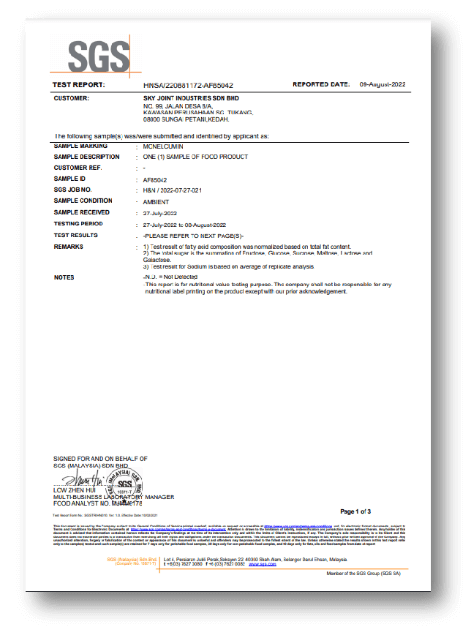
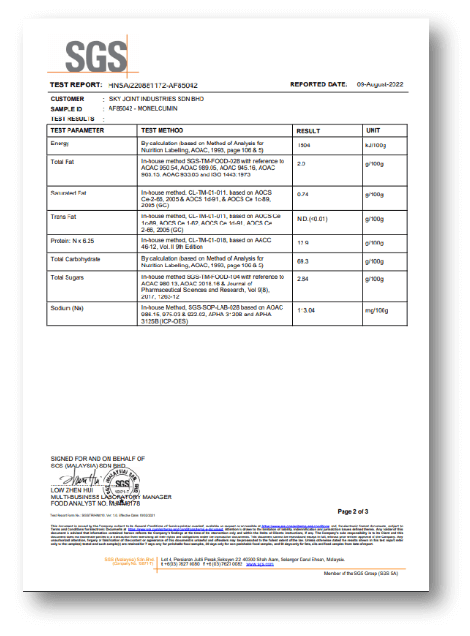
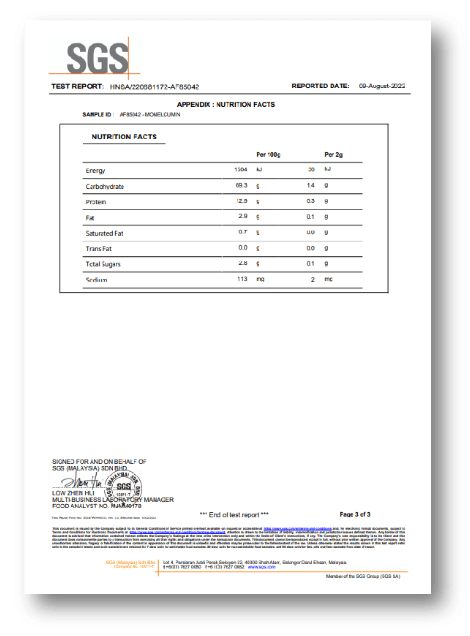
Food Safety Analysis Report
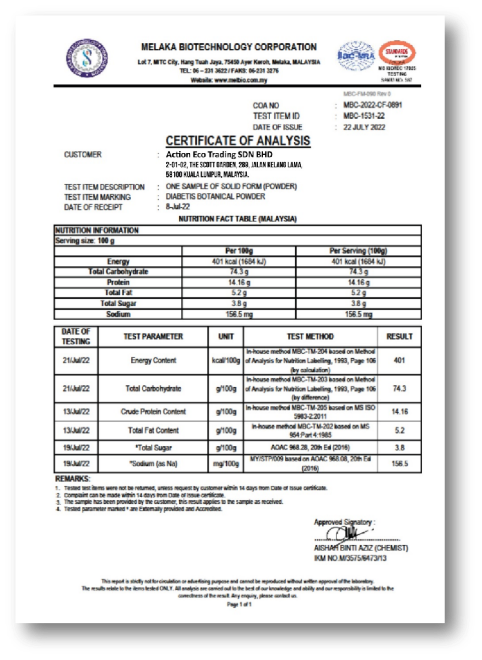
Food Quality Certifications




